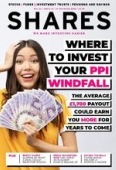Archived article
Please note that tax, investment, pension and ISA rules can change and the information and any views contained in this article may now be inaccurate.
Earn a monthly income from investment funds

The idea of funds which can help you pay your monthly bills is an attractive one and the good news is there are a large number of UK funds which pay dividends every month.
In some cases this will mean sacrificing some of the potential for capital gains, as their main aim is protect your money and give you an income every month.
Most are typically bond or multi-asset funds, or equity funds that invest in the big FTSE 100 companies.
HOW THEY WORK
Most monthly dividend funds tend to work by paying 11 equal monthly dividends, and then give you whatever’s left in the pot for the twelth month.
Open-ended funds have to pay out all of the income that accrues in the fund over their accounting year (the accumulation units allow you to roll it up in the fund). You need to invest in the ‘inc’ version of the fund to receive dividends as cash.
If you’re in retirement and want to pay the bills with the income from such funds, it would be a good idea to check if the income paid out from a fund is smoothed or lumpy.
Some funds don’t pay exactly the same amount of money each month, hence the term ‘lumpy’.
A smoothed payment involves the fund manager attempting to pay out the income in equal monthly instalments. But this tends to involve the fund manager holding back some of the income in case there is a bad month.
The risk of a fund encountering a difficult period feels particularly acute at the moment with Brexit uncertainty and US-China trade talks causing market volatility.
When the manager holds back some of the money, this can subsequently mean a bigger payment is made towards the end of the year if there is excess cash to be handed back.
An example of a fund which pays lumpy dividends is Fidelity Multi Asset Income (BFPC050), while a fund which smooths out payments is Premier Multi-Asset Monthly Income (B7GGPC7).
The tables, comparing their recent dividend payments, show how the income profile of each fund compares.
It’s important to understand that aside from the dividend yield, overall returns from monthly income funds haven’t been great this year, and it may take a while before performance picks up significantly.
WHAT ARE THE RISKS?
A lot of them invest in bonds, and some bond yields are currently at record lows, so if you desire a better return, you’ll have to move into funds that invest in shares, which inevitably pushes you further up the risk scale.
While it is worth keeping these factors in mind, it is far from the case that all monthly dividend funds are inherently risky. Here are two top constituents from AJ Bell’s Favourite Funds list that pay out income every month.
Artemis Strategic Bond (B2PLJS2)
A popular fund for bond investors, Artemis Strategic Bond has delivered steady returns.
Managed by veteran bond manager James Foster and rising star Alex Ralph, the fund invests in both investment grade bonds (considered safer but typically with a lower return) and high yield bonds (riskier but with a potentially better return), as well as government and corporate bonds.
The managers look at the economic cycle, a company or government’s default (bankruptcy) outlook, yields and interest rates when deciding what to put in their portfolio.
While the fund is down in the past year against its benchmark, over the longer term the process seems to have worked well with the fund ahead on a three, five and 10-year basis.
This fund does have a monthly distribution share class, but it’s worth highlighting the share class for this fund on AJ Bell’s Favourite Funds list is the quarterly distribution share class.
Man GLG UK Income (B0117D3)
Packed full of big dividend-paying stocks like Rio Tinto (RIO), BP (BP.) and Royal Dutch Shell (RDSB), this fund looks at companies which have strong potential for dividend growth that exceeds twice the market average.
The fund also invests a small amount in bonds, and does so if they appear more attractive than investing in shares. But the bond element of the fund can’t exceed 20% of the whole portfolio, and the amount in bonds currently stands at only 3.5% of the fund.
Managed by the highly regarded Henry Dixon, the fund has lagged its benchmark over one year, but comes out well ahead over three, five and 10 years.
It has an attractive dividend yield of 5.4%.
The fund’s investment process is the same as the successful Man GLG Undervalued Assets (BFH3NC9) – which has consistently beaten its benchmark over three and five years. It picks out stocks where it feels the market is undervaluing the profit stream.
Important information:
These articles are provided by Shares magazine which is published by AJ Bell Media, a part of AJ Bell. Shares is not written by AJ Bell.
Shares is provided for your general information and use and is not a personal recommendation to invest. It is not intended to be relied upon by you in making or not making any investment decisions. The investments referred to in these articles will not be suitable for all investors. If in doubt please seek appropriate independent financial advice.
Investors acting on the information in these articles do so at their own risk and AJ Bell Media and its staff do not accept liability for losses suffered by investors as a result of their investment decisions.
Issue contents
Big News
- Woodford Equity Income wind-up shakes fund industry to its core
- Could debt concerns at rival help Domino's Pizza?
- Shareholder dissent remains muted
- First glimpse at how stocks could react to positive Brexit deal
- TUI and Jet2-owner Dart capitalise on Thomas Cook ‘game-changer’
- UK dividend growth under threat

 magazine
magazine










